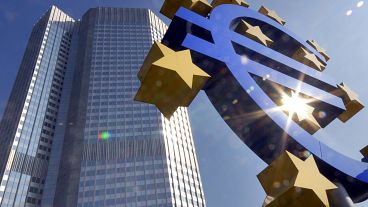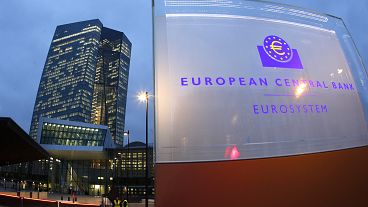The euro has surged to a 13-month high against the dollar, benefiting from four weeks of gains as the Federal Reserve signals upcoming rate cuts.
The euro has climbed to its highest level against the dollar in 13 months, entering the final week of August with four consecutive weeks of gains and marking its strongest weekly performance since November 2023.
This rally has pushed the EUR/USD exchange rate to heights not seen in over a year.
At the start of the week, the euro traded around 1.1170 against the greenback, down slightly by 0.1% after rising 0.7% last Friday and touching the 1.12 mark.
Federal Reserve turns 'dovish'
The recent strength of the euro can be largely attributed to a broad-based weakening of the dollar, which has lost ground against all major currencies as the Federal Reserve hinted at the imminent start of rate cuts.
Since late June, the dollar has depreciated by over 10% against the Japanese yen, more than 5% versus the Swiss franc, and approximately 4% against both the British pound and the euro.
This trend has been widespread, gaining momentum in August following the release of several weak US economic data points.
Specifically, this was the case for the July employment figures and lower-than-expected CPI data, which have led to a dovish shift in the Fed's stance.
Powell confirms a September rate cut
Federal Reserve Chair Jerome Powell delivered a dovish message at the Jackson Hole Symposium, effectively opening the door to rate cuts and signalling greater focus by policymakers on labour market conditions.
"The time has come for policy to adjust. The direction of travel is clear," he stated.
Powell emphasised that "the balance of the risks to our two mandates has changed," noting his increased confidence that inflation is on a sustainable path back to 2%, but also recognising the "unmistakable" cooling in labour market conditions.
The Fed Chair also indicated that the US central bank has "ample room to respond to any risks".
Prior to Powell's speech, minutes from the latest Federal Open Market Committee meeting revealed that a "vast majority" of members believed that if the data continued to align with expectations, it would likely be appropriate to ease policy at the next meeting.
As a result, the question is no longer whether the Fed will cut interest rates next month, but by how much.
Currently, traders assign a 68% probability to a 25-basis-point move, according to CME Group's FedWatch tool.
By the end of 2024, market participants are pricing in nearly a full percentage point of Federal Reserve rate cuts.
ECB's more cautious approach
In contrast, the European Central Bank's (ECB) July policy meeting minutes showed that policymakers in Frankfurt remain cautious about potential interest rate cuts.
It appears that they would prefer to approach the September meeting with an open mind, guided by a thorough evaluation of the upcoming economic data.
EUR/USD forecasts: Analysts' expectations
"Reduced domestic political noise after the French elections also helped the EUR, but the move has been driven by the repricing of Fed expectations. There has been a high correlation between EUR/USD and German-US yield spreads, and the current pricing of a dovish Fed suggests limited upside for EUR/USD," noted forex analysts at BBVA.
They further mentioned that the euro's recent rally has exceeded expectations but confirmed their view that the dollar had downside potential over the summer.
However, they cautioned that sustaining this rebound would require stronger-than-expected growth dynamics, a less dovish ECB, or positive geopolitical developments.
"Powell's dovish tone at Jackson Hole continues to weigh on the rate trend, supporting the euro's bullish trend. We do not rule out a corrective move toward 1.1140, a level that would not change the short-term bullish view," commented Luca Cigognini, market strategist at Intesa Sanpaolo.
James Knightley, ING Group's chief international economist, observed, "The market favours a 25-basis-point move, but the upcoming jobs report will determine what happens. They don’t want further weakness so another rise in unemployment to 4.4% or 4.5% could trigger a 50-basis-point move."
The Bank of America noted: "EUR/USD remains more of a US/Fed story. We forecast EUR/USD at 1.12 by year-end and 1.17 next year, which remain well above consensus' 1.09 for '24 and 1.12 for '25."
Michalis Rousakis, an analyst at Bank of America, also added: “Of course, the move will likely still be bumpy, given the start of the Fed rate cutting cycle, heightened US political uncertainty, global geopolitical concerns, as well as markets that are still weary of the potential for recession risk."
However, the US investment firm cautioned that Eurozone data could disappoint the ECB's forecasts, particularly due to emerging signs of fragility in the labour market.















